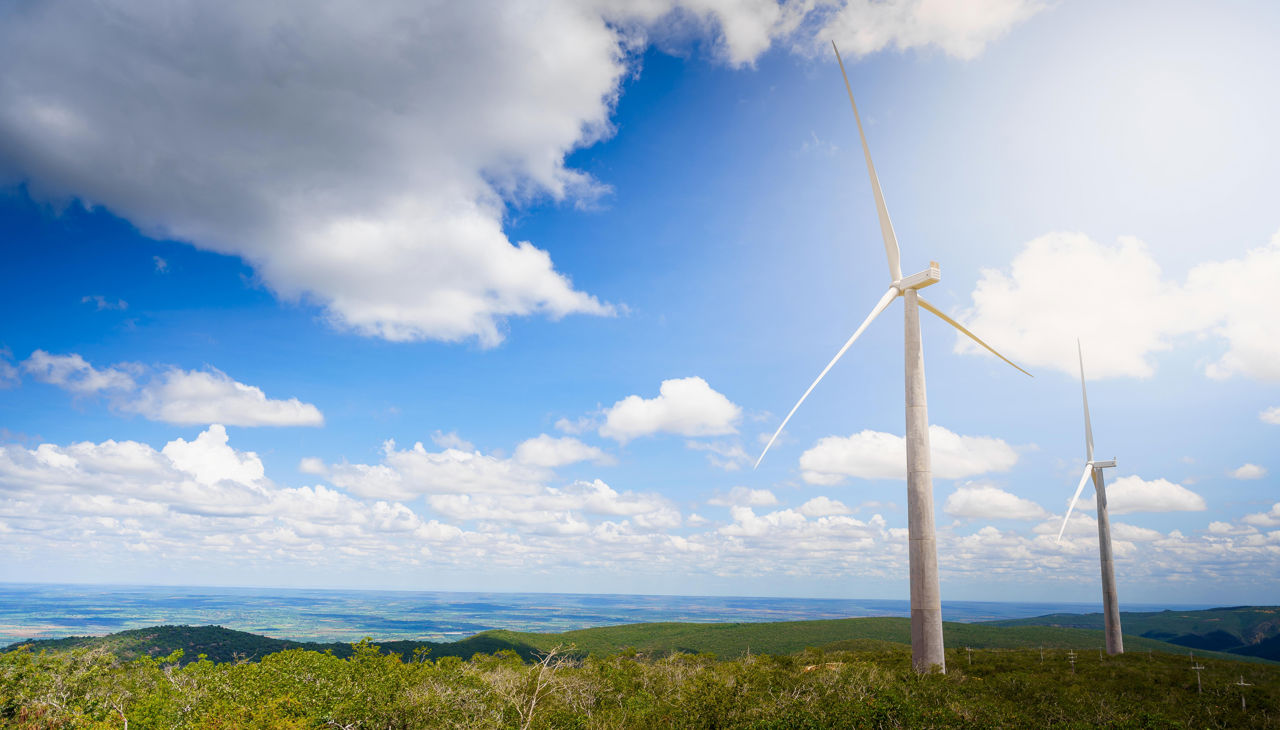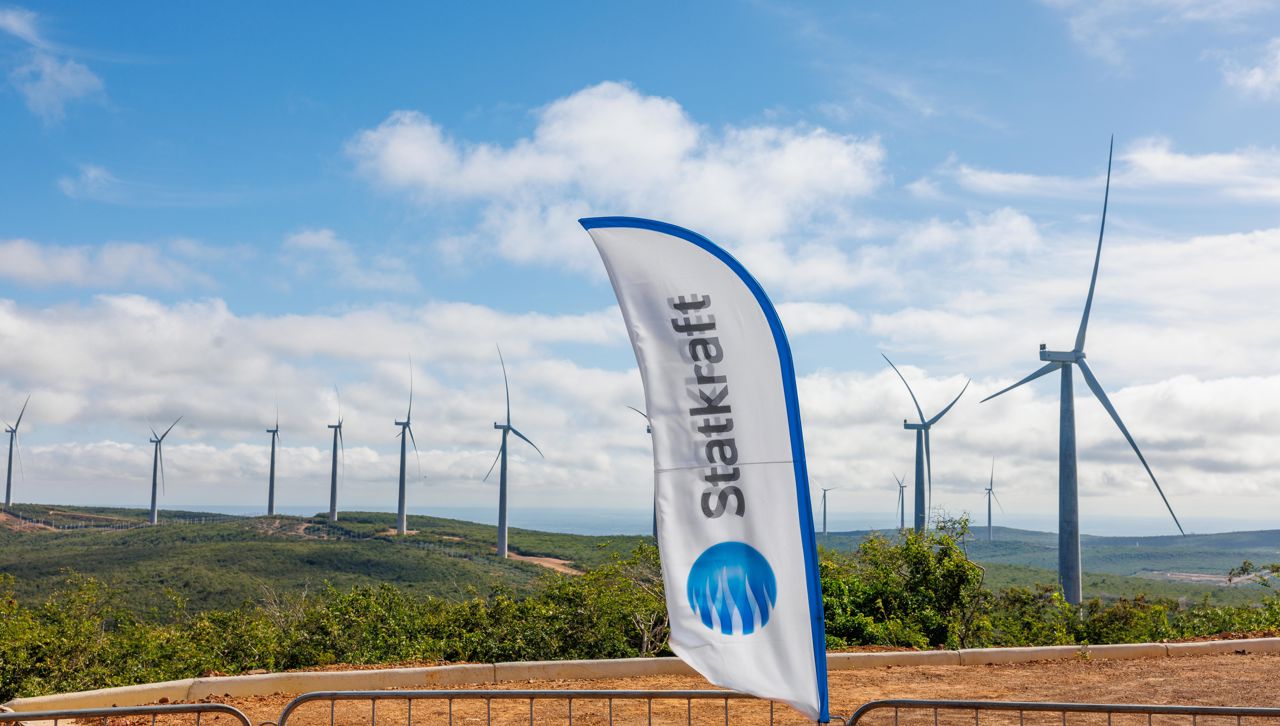Statkraft is developing one of Brazil’s first hybrid renewable energy projects by adding the 162 MW Santa Eugênia Solar to the existing Ventos de Santa Eugênia Wind Complex in Bahia. Combining solar and wind power on the same site reduces infrastructure needs and land use while maximizing the area’s renewable energy potential. The project will help meet growing energy demand and support local communities through job creation and social investments in education, health, and the environment.

Ventos de Santa Eugênia Wind Complex
The Ventos de Santa Eugênia Wind Complex is located in the municipalities of Uibaí and Ibipeba, in the interior of the state of Bahia.
The Ventos de Santa Eugênia Wind Complex consists of 14 wind farms with 91 wind turbines with 5.7 megawatts of power each. This project is the largest of the Statkraft Group outside of Europe.
We are also developing one of Brazil’s first hybrid renewable energy projects by adding the 162 MW Santa Eugênia Solar to the existing Ventos de Santa Eugênia Wind Complex in Bahia.
Key figures
-
2024Entrou em funcionamento
-
519 MWCapacidade instalada
-
2.300 GWhProdução anual
Project timeline
2024
Construction of the The Santa Eugênia Solar Complex started
Construction of the Ventos de Santa Eugênia hybrid solar farm started in 2024. Using battery technology, the energy complex will have a combined capacity of 682 MW. Operations are planned in 2025.
7 Feb, 2024
Inauguration of the Ventos de Santa Eugênia Wind Complex
Statkraft inaugurates the company’s largest wind farm outside Europe, the 519 MW Ventos de Santa Eugênia Wind Complex in Bahia, Brazil. Announcement of the Santa Eugênia Solar Complex construction start were also communicated.
The Santa Eugênia Solar Complex
The project site was chosen after extensive environmental, technical, and regulatory studies to qualify as a hybrid project. The selected location offers proximity to existing infrastructure and compliance with legal and environmental requirements. Brazil faces challenges with transmitting energy efficiently through its grid, making hybrid projects critical for ensuring a more reliable energy supply to the country.
The Santa Eugênia Solar Complex was developed based on rigorous socio-environmental studies conducted by independent specialists, following all Brazilian and international legal guidelines. During the licensing process, detailed analyses were carried out to ensure that the project does not directly impact traditional communities, such as indigenous peoples, quilombolas, and fundo and fecho de pasto groups.

Engaging with local stakeholders
In the Santa Eugênia Solar Complex contruction preperation, we have conducted extensive local consultations and established collaboration forums that include representatives from various community groups. This approach has ensured that the project not only meets but exceeds legal requirements for environmental and social measures.
We have proactively engaged with local communities, conducted public meetings, and established a permanent Communication and Monitoring Committee involving local stakeholders. We also maintain open communication channels, including a dedicated hotline and an on-site information center, to address community concerns.

Environmental and social commitment
The Solar Complex will impact 454 hectares of caatinga land in the Bahia region. The project is located on private land and does not directly affect the traditional communities in the area, an important consideration for Statkraft when developing projects in this area.
Comprehensive environmental studies, analysed and approved by the licensing authority has verified that the project complies with all legal and environmental requirements. It identified potential impacts on vegetation, fauna, and water systems, and to address these, the project has implemented robust mitigation measures, including replanting of native seedlings, wildlife conservation and measures to safeguard water supply.
These initiatives are part of the project's broader commitment to comply with environmental regulations, ensure minimal impact, and enhance Brazil's renewable energy capacity while supporting sustainable development in the region.
More than 1000 workers have been employed by the project, with 55 percent coming from the local region. Before construction began, Statkraft partnered with the National Service for Industrial Training to train local professionals in photovoltaic system assembly. This contributes to local skills development that can also be used for other projects.